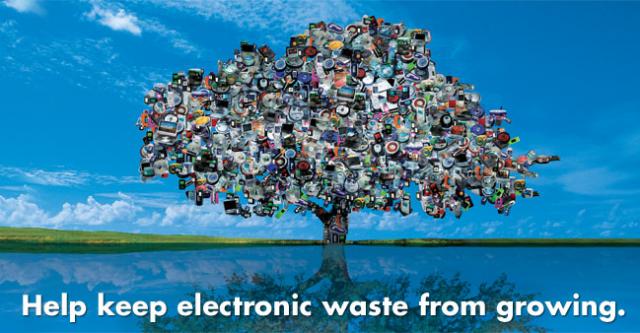If there’s one key reason as to why there’s been such a surge of interest in e-waste recycling, it could be summed up in two words: environmental protection. Simply put electronic recycling helps the environment. So how does recycling electronics help the environment?
More and more states are trying to keep electronic waste out of their community landfills by requiring them to be recycled instead. One of the most recent states to do so was New York, which in 2015 made it illegal to leave computers and other electronics for curbside trash pickup.
There are also ongoing efforts to educate the public about the benefits of electronics recycling.
So why is there such a strong interest in recycling electronics today? Because the evidence is clear that putting computers, cell phones, tablets, computer monitors and other a host of other electronics in your regular garbage poses serious environmental risks.
How does recycling electronics help the environment?
In today’s age, people are constantly changing their electronic devices every year for better and faster models. But what happens to your old devices? Are they just taking up space in your junk drawer or worse generating more waste in landfills that isn’t biodegradable? Here are a few ways that electronics affect the environment.
E-waste Contains Toxic Substances
The materials used to build these devices, testing has shown, can poison the soil around the landfill if there’s a lot of lead and mercury in them.
Their components are literally toxic to the environment. Once tossed in a landfill, they’re simply being left to leach into the earth, especially during the summer months. When e-waste is exposed to the heat, toxic chemicals are released into the air damaging the atmosphere; this is one of the biggest environmental impacts of e-waste. Those toxic materials can then seep into the groundwater, affecting both land and sea animals.
Electronic waste can also contribute to air pollution. These are devices that don’t belong in the regular trash since they contain lead, mercury, cadmium, and other potentially harmful chemicals.
There have even been studies done that indicate a link between e-waste in landfills and possible threats to human health, including serious respiratory issues. The journal Environmental Research Letters has reported that researchers took air samples from a large e-waste dismantling area in China and determined that these products had a negative impact on human lung cells.
Additionally, many pollutants get released from e-waste, and can accumulate in the human body as people inhale contaminated air.
When the National E-Waste Conference and Exhibition was held in Nairobi, they released the findings of a United Nations Environmental Programme study of 300 schoolchildren near Dandora. The study found that half the children had tested positive for respiratory problems, and 30 percent had blood abnormalities – both indicative of heavy-metal poisoning from electronics.
Rising Volumes of E-waste
Besides the environmental risks, a major challenge today is the sheer volume of e-waste that gets discarded. As technology improves and each device is upgraded with additional features, the older versions become obsolete. Suddenly there’s more and more end-of-life electronic goods being discarded.
It’s been estimated that each year, between 20 and 50 million tons of e-waste gets generated worldwide. In 2012, the U.S. alone generated more e-waste per resident than any other nation; more than 5 million tons of electronic equipment in the U.S. is recycled every year. That breaks down to approximately 74 pounds of e-waste per person.
Currently, only 15-20 percent of all e-waste is recycled. And according to a report by the Environmental Protection Agency (EPA), every day, we toss over 416,000 cellphones and 142,000 computers either by recycling or disposing of them in landfills and incinerators.
The need for increased recycling of these products is strong and urgent. In 2014, the global sales of smartphones increased by 23 percent. As we continue buying smartphones and other gadgets, we keep putting the old models out in the trash.
Recycling the e-waste saves space in landfills and prevents the environmental pollution caused by the toxins. Recycling also reduces the need for landfills in the first place. Goods made from recycled materials use less water, create less pollution, and uses less energy.
Make A Difference With Great Lakes Electronics
The good news is that it’s easy to recycle electronics. Increased recycling can help both the environment and can create green jobs in the future.
Recycling e-waste not only helps to conserve energy, but it also recycles natural resources like copper, silver, and aluminum. Many of the metals used in our gadgets are rare earth metals that are in limited supply. When they are recycled they can be reused instead of having to mine for new supplies.
That also helps prevent air and water pollution. It’s a win for everyone.
At Great Lakes Electronics, we have years of experience performing environmentally friendly recycling of electronic products. This includes computers, Circuit Boards, telephone equipment and communications systems.
The Great Lakes Electronics team will disassemble these items into component parts, and the ones that still have value can be sold for reuse. Everything is recycled and other parts are used for metals recovery.
Contact Great Lakes Electronics Corporation today at 888-392-7831 to learn more about responsible ways to recycle for old electronics.

